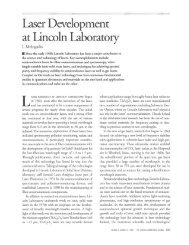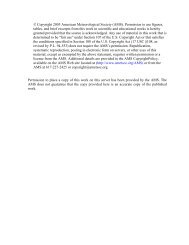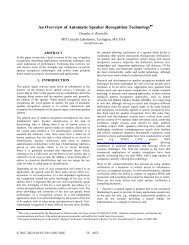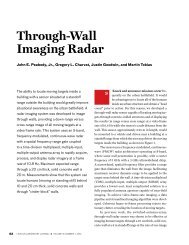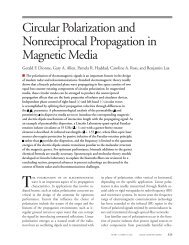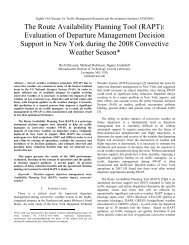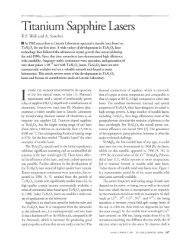Automated Flight Strip Management System Functional Description
Automated Flight Strip Management System Functional Description
Automated Flight Strip Management System Functional Description
Create successful ePaper yourself
Turn your PDF publications into a flip-book with our unique Google optimized e-Paper software.
After confmning the routing and coordinating and recording any delays or flow<br />
control restrictions, the <strong>Flight</strong> Data Controller puts the <strong>Flight</strong> Progress <strong>Strip</strong> into a plastic<br />
holder and places it in one oftwo rows in front ofthe Clearance Delivery position. It will<br />
remain in this position until the pilot requests his ATC clearance from Clearance Delivery.<br />
An IFR flight plan will "time out" after two hours unless a request is made to keep it active<br />
to accommodate a delay. The length oftime the flight plan will be held can be extended in<br />
the event ofdelays but is limited by the ARTS capacity.<br />
The pilots must also receive a weather briefing before departure, either through their<br />
company's weather department or from the FAA. Airline flights must also obtain a<br />
clearance from their company dispatch office before departure. The dispatcher checks,<br />
among other things, weight and balance, fuel, runway length requirements, conformance<br />
with required maintenance, and the fIled route. Weight and balance data is used to calculate<br />
aircraft takeoff and climb performance including VI, VR, and V2 (the velocities at which<br />
the aircraft can continue the take-off in the event ofengine failure, the velocity at rotation,<br />
and the velocity at lift-off respectively). Sometimes the aircraft will depart the gate without<br />
having "the numbers" from its dispatch office and will receive the numbers and clearance<br />
from dispatch over its company ARINC radio frequency. Ifthe aircraft departs the gate<br />
and enters the taxiway queue and then fails to receive a clearance from the dispatcher, it will<br />
have to return to the gate.<br />
4.4.1.2 Clearance Delivery<br />
Historically, IFR clearances have been read to pilots over the Ground Control<br />
frequency, and at many less busy airports this is still the case. Congestion of the Ground<br />
Control frequency at Logan and other busy airports, however, has dictated the use of a<br />
separate frequency known as pre-taxi Clearance Delivery or simply Clearance Delivery.<br />
This frequency, published on approach procedure charts, is used by the pilot to request his<br />
or her ATC clearance prior to engine start or "push-back" from the gate. Clearance<br />
Delivery is a separate position at major airports and the function ofthe Clearance Delivery<br />
controller is to read the ATC clearance to the pilot and monitor the "read-back" for<br />
accuracy.<br />
The clearance itself consists of the initial and en route routing (which may include a<br />
published Standard Instrument Departure or SID procedure ), initial altitude and an<br />
expected altitude clearance (along with a time or distance in which to expect the higher<br />
altitude), a four-digit beacon or "squawk" code for the transponder, and a frequency for<br />
departure control. The portions of the clearance preceded by "expect" are given so that the<br />
pilot will follow those altitudes/routings in the event oflost communications. Since most<br />
of the major airline flight plans are stored on computer tapes and presumably follow<br />
customary ATC routings, it is usual for the route med to be approved and the route portion<br />
ofthe clearance to be read "cleared as fIled" or contain some initial vectors!routings and<br />
read "and then as filed" with the pilot having the responsibility for knowing what route was<br />
requested The Clearance Delivery position knows to read the entire routing to the pilot if<br />
the code letters "PRC" which stand for "Full Route Clearance" appear on the <strong>Flight</strong><br />
Progress <strong>Strip</strong>. This is indicative ofa change in the routing from that filed in the flight<br />
plan. A readback of the entire clearance by the pilot is customary to ensure accuracy,<br />
especially of the beacon code, initial altitudelheading, and departure control frequency. At<br />
very busy airports, including Logan, frequency congestion sometimes makes it impractical<br />
for a complete readback, and it has become a common practice to abbreviate the readback to<br />
essential information with the beacon code, initial altitude and departure frequency numbers<br />
being a minimum if the route is as filed.<br />
21



